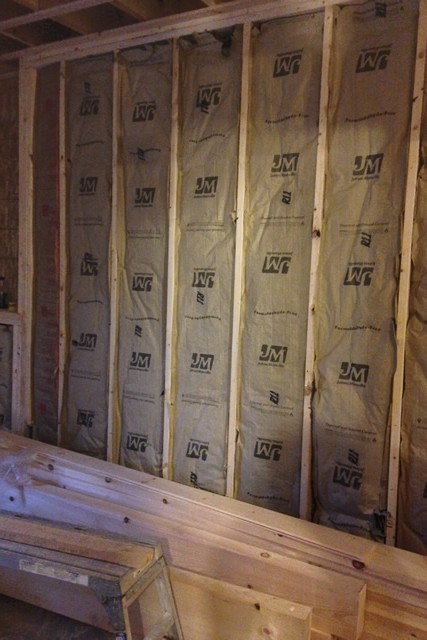After the builder had left on Wednesday Structure Metrics stopped by to perform the blower door test and infrared scan of the house.
The blower door (shown in the picture below) is used to determine the Air Changes per Hour (ACH) under a simulated 20 MPH wind. It works by depressurizing the house to 50PA and measuring the air flow at that pressure.
A typical new construction house usually achieves an air sealing level of 3 – 4 ACH. Good construction where the builder has paid attention to air-sealing typically achieves 1 – 2 ACH. With relentless attention to air-sealing you can achieve a sub 1 ACH level. And, Passive Houses (the best you can get) typically achieve 0.6 or lower ACH.
I was thrilled to achieve a 0.74 ACH leakage rate (~210 CFM).
While the blower door was running, Structure Metrics walked around the house with an infrared camera to look for leaks. We found and will target leaks around the windows and under door thresholds.
For more detailed information, Green Building Advisor has a great article on Blower Door Tests: http://www.greenbuildingadvisor.com/blogs/dept/musings/blower-door-basics

One of the other problem areas that showed on the infrared scan was the basement insulation. The spec called for the basement walls to be covered with 1.5in of isocyanurate insulation followed by 5.5in of fiberglass insulation.
Unfortunately, the wall cavity was not created deep enough for a full 5.5in fiberglass batt (R-19). There is only enough room for a 3.5in batt (R-11). I initially installed these batts with the paper face tacked to the front of each stud. As it turns out, this is the wrong way to install fiberglass insulation-it needs to be in-contact with whatever surface it is insulating. I went back and pushed each batt into the stud cavity and tacked the paper to the sides of the studs (picture below)
This should greatly increase the insulating capacity of the fiberglass and result in an R-22 wall.


I elected to also insulate the walls of each bedroom to reduce noise transmission and to insulate the bathroom walls to reduce moisture transmission and sweating.

